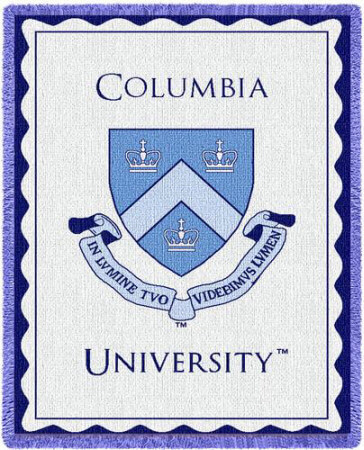
Hoping to get into a life sciences program and wondering what GRE score you’ll be expected to have to make it through the application process? Here’s the info from the ETS chart that tells us the average GRE scores for Life Science programs, based on survey data they collect from test takers.
GRE Scores for Life Science Programs (Intended Applicants)
| Specialty | Verbal | Quantitative |
|---|---|---|
| Agriculture, Natural Resources, and Conservation | 151 | 152 |
| Biological and Biomedical Sciences | 153 | 154 |
| Health and Medical Sciences | 150 | 149 |
| Overall Life Sciences | 151 | 151 |
The scores above are intended majors. What does “intended” major mean? It simply means that that these are the average scores of people planning on applying to graduate school in a specific major.
Finding a Real Score Range for Life Science Programs
Using a scale drawn from the limited score data in the US News & World Report’s report on graduate schools, here’s a range of GRE scores for Life Sciences programs that you could expect to see:
GRE Scores by Ranking and Specialty
| Specialty | Programs Ranked #1-10: Verbal | Programs Ranked #1-10: Quantitative | Programs Ranked #11-50: Verbal | Programs Ranked #11-50: Quantitative | Programs Ranked #51-100: Verbal | Programs Ranked #51-100: Quantitative |
| Agriculture, Natural Resources, and Conservation | 160-164 | 158-162 | 157-161 | 154-158 | 154-158 | 151-155 |
| Biological and Biomedical Sciences | 162-166 | 160-164 | 159-163 | 156-160 | 156-160 | 153-157 |
| Health and Medical Sciences | 159-163 | 155-159 | 156-160 | 151-155 | 153-157 | 148-152 |
| Overall Life Sciences | 160-164 | 157-161 | 157-161 | 153-155 | 154-158 | 150-154 |
If you are viewing this chart on a mobile device and cannot see all of the columns for schools ranked #1-50, try turning your device horizontally or view this page on the web.
GRE Scores: 50th/70th/90th Percentiles
You can learn more about percentiles in this score percentiles post, but for quick reference, 50th percentile scores are average, 70th percentile is considered good, and 90th percentile is considered great.
| Program | Verbal Mean Score (50th percentile) |
Verbal Good Score (70th percentile) |
Verbal Great Score (90th percentile) |
|---|---|---|---|
| Agriculture, Natural Resources, and Conservation | 151 | 156 | 162 |
| Biological and Biomedical Sciences | 153 | 158 | 164 |
| Health and Medical Sciences | 150 | 155 | 161 |
| Overall Life Sciences | 151 | 156 | 162 |
| Program | Quant Mean Score (50th percentile) |
Quant Good Score (70th percentile) |
Quant Great Score (90th percentile) |
|---|---|---|---|
| Agriculture, Natural Resources, and Conservation | 152 | 153 | 160 |
| Biological and Biomedical Sciences | 154 | 155 | 162 |
| Health and Medical Sciences | 149 | 150 | 157 |
| Overall Life Sciences | 151 | 152 | 159 |
What Can We Take Away from Life Sciences Programs’ Average GRE Scores?
From these tables, we can see that Biological and Biomedical Sciences had the highest GRE scores across the board, while Health and Medical Sciences had the lowest. In each of the specific subfields, average Quant scores were ever-so-slightly higher than average Verbal scores (though this didn’t hold up for the Overall Life Sciences category). However, remember that these averages have their limits in terms of usefulness. If you’re applying to grad school in the life sciences, your best bet is to aim for a score within or above the range for your dream program’s rankings.
Applying to school isn’t exactly a science, so a (slightly) non-scientific approach should put you in a good enough position to create the appropriate study goals. So if you’re interested in a Master’s of Health Administration from UCLA, or a PhD in Agricultural and Resource Economics from Berkeley, then this is a good starting point for understanding where you swim in the great, mysterious sea of grad school applicants.






Comments
43 responses to “GRE Scores for Life Sciences Programs”
Dear Chris,
My GRE score is 298 152Q and 146V.
I have GPA of 4.0 in masters in Pharmacy.
I am planning to pursue Masters in Pharmaceutics or bio informatics.
I also have an experience of 1.5 years in Pharma R & D
Can you suggest any universities with the said score.
Hi Snigdha!
With your experience, you have many options! You’ll probably have to narrow down the program options, not only by your score qualifications, but also by looking carefully at each school’s required classes. That way you can make sure that you pick a program with a track that you are particularly interested in.
Check out these resources for information on program options:
Masters in Pharmaceuticals: http://www.aacp.org/resources/student/graduateresearchstudents/Pages/graduatedegreeprograms20092010.aspx
Masters in Bioinformatics:
http://grad-schools.usnews.rankingsandreviews.com/best-graduate-schools/top-science-schools/genetics-rankings
Good luck! 🙂
Rita
Hiiii. I got 283 in gre. I have completed M.sc and M.tech. Now i am a project assistant at an well known institute. so could you please tell me which university should I preffered for persuing PhD.Please reply
Hey Arpa! I’d start with the US News article I cited above and then find which schools match your interests the most. Unfortunately this is such a personal process, it’s hard to recommend a program for you. 🙂
Chris S
Hey chris,
Firstly, thanks for all the help you did for me and e very gre aspirant. I really appriciate.
I am Sumit soni,
My gre score is 150-verbal, 155-quant. 3.5-awa
Ielts overall-7 ( 7.5-s, 7.5-l, 7- r, 6.5-w).
Gpa- 3.75
I have done bachelors of dental surgery fro, indore, india.
I have 3 years of work experiene in advanced dental surgery and have been working as private practitioner as well as consultant dentist to a hospital.
Along with that, I work as assistant hospital administrator as well as icu in-charge in a hospital as my second job since 3 years simultaneously. .
Over all 3 year of experience include 6 months of teaching orthodontics and appliances handson to undergrads too.
Now I wish to apply for Masters of Healthcare administration program in some renowned schools in usa and canada.
So far I have selected penn state univ, ohio state univ, john hopkins…..and as very ambitious options in canada- UBC and Concordia-montreal.
On safer side, I also wish to apply for UHCL, UTD.
please give me your valuable advice chris. Thankyou.
Hey Sumit! Unfortunately it’s hard to say which schools would fit your profile as there are a lot of considerations that you should have in choosing a program. It’s really about making sure your aspirations and interests are aligned with their profile. For many schools this is even more important that scores. 🙂
Chris S
Hi Chris,
I was wondering if based on your experience you would know if a 72 percentile quantitative score is sufficient to apply to a life science PhD program that states their accepted applicants generally score above 80 percentile?
The rest of my application should be strong as I have a publication, 2 years research experience and a 3.98 major GPA.
Thanks
Hey Tun! It’s always hard to say for certain. It might be a bit of a stretch, so I’d reach out to the schools to get a better idea. 🙂
Best,
Chris S
Hi,
I just got my GRE scores back and received a 159 for Verbal, 161 for Quant and 3.5 for AWA. I am an Engineering Geology major from UCLA and am interested in knowing where I stand in terms of competitiveness for graduate schools (i.e. MS PhD) in Geology and/or Engineering?
Thanks,
Bill
Hey Bill! Check out the UCLA GRE Scores post for more info on those scores. If you don’t see exactly what you’re looking for, try to pick something that requires generally similar scores. 🙂
Best,
Chris S
Hi, Chris.
I have a plan to apply for Ph.D. course of biological sciences.
I got 2 GRE scores
1) 157(V) 167(Q) 3.0(W)
2) 156(V) 163(Q) 3.5(W)
I wonder which score is better for admission.
Do you have any idea?
Hey Dasom! It’s tough to say. I recommend you check in with the admissions offices to see how they weigh the various scores. My guess is that they care less about the AWA when assessing your writing skills than they do about your research/writing samples.
Best,
Chris S
Hi Chris,
Most of the PhD programs I’m applying to for biology are in the #11-50 range. Do you think my 158 verbal, 158 quantitative scores are good enough or do you think I’ll be cutting it too close? I also have research experience and a 3.7/4.0
Hey Cody! While there’s never a guarantee, as long as you’re in the range, I’d focus elsewhere, particularly your research interests. 🙂
Best,
Chris S
Hi Chris,
I just took my GRE and got Q:161, V:157. I want to pursue a phD in Pharmacology (this would fall in biological sciences). It seems my Q is adequate, but my V is beneath the range. Does the range that you provided represent the average score for each program?
Anyway, I was wondering – will this score be good enough to give the top 10%-ers a shot? Or should I retake it in 1 month to try for a higher score?
Thanks,
Wes
Hey Wes! It always depends on the program, but if your GRE scores are close to the range, then more weight will probably come down on research interest or experience. It’s tough call whether or not to retake when you’re right on the line.
Best,
Chris S
Hi Chris,
I have got an opportunity for
Designation : Research Assistant in Biological Sciences
Degree: BS/B.Tech/MS/Msc in Biotechnology/ Microbiology/Biochemistry/Botany/ other Lifesciences
Location: USA
Including a pHD from the university under ASSISTANTSHIP/FELLOWSHIP.
The query I have is GRE score required for the pHD in this case.
Hey Nazia! Definitely reach out to the universities for a bit more info on that. I’d use the above scores as a general guideline, though. 🙂
Best,
Chris S
Hi,
I recently took the GRE and got a 159 math, 160 verbal and a 5.5 in writing. I am applying for a PhD in microbiology/immunology/molecular genetics and my top choices are UCLA and Duke. Are these scores good enough to make the cut?
Thanks!
Hey Matt! It’s hard to say as there are a lot of factors that go into your application, especially with a PhD. I’d definitely reach out to the programs you’re interested in to find out more information. 🙂
Best,
Chris S
Hello Chris,
How about the AWA score range for the biological sciences programs?
Thanks.
Hey Ana! I didn’t include those because it’s quite variable how programs use the scores. I think in general a top program you should aim for 4 or above.
Best,
Chris S
Hey Chris
From what I’ve heard and seen on several college website, the Quant scores are usually higher for biological sciences/engineering programs like Biomedical Engineering, Bioinformatics, Biotechnology and alike fields! However, the data above presents disparity!
I’m confused!
Hey Gaurav! The above scores represent simply the general field of biology. Something much more technical like Biomedical Engineering would certainly require more quantitative ability and therefore average scores would be higher. 🙂
Best,
Chris S
Hi Chris, are there any universities that would accept GRE scores as low as 294 for there PhD programs in Biological sciences?
Hey Amit! The best answer I can give is “probably”. The GRE is not the final word on your application, so there are definitely ways to overcome a below-average score, but it won’t make your life any easier!
Best,
Chris S
I wish to pursue phd in biotechnology from USA . I did my masters in biotechnology from India . my academic results are as: 10th-85% , 12th-84%, b.sc biotech-78% and m.sc biotech cgpa-9.7/10 . I will be writing GRE n TOEFL in october . what is the average GRE score for phd admissions . I have done two summer internships and one project as part of my msc curriculum . but , I dont have any research publication .
kindly reply me and do I need to contact the proffs before I start my application process ?
Hey Sunayana! I’d say look at the upper end of the ranges for biological sciences given above, but the average will vary from school to school. As research is important with a PhD, I definitely recommend reaching out to the professors doing research that interests you the most.
Best,
Chris S
Hi
Please guide me for my PhD program as i have completed my post graduation in Microbiology am looking for some biochemstry/mol bio/cell science projects
Hey Anup! Unfortunately that’s not really my area of expertise. Try doing some research on universities and then reaching out to teams leading interesting projects. 🙂
Best,
Chris S
Hey, Could you guide me as to what score I would require to get into the top 5 – top 10 Molecular Biology Programs? I will be completing me BE in biotechnology next year. Taking my GRE within the next week. Thanks.
Hey Ujjal! While no score guarantees an “in”, I’d follow the general scores for biology, putting you at 160-164 verbal, 156-160 quant.
Hope this helps!
Best,
Chris S
Hey, i am post graduate in medical pharmacology with 2 year experience as tutor in subject. I am interested for phd in neuro-pharmacology (comes under life science). I got the score of 148(verbal),154 (Quant) 3.0(A.W.). I too have 7 publications in fields(But not in very reputed journal). Is there chance for me to get admission in my area of interest in US. Could you please tell me in which all universities i should have apply for
Hey Lucky!
Definitely check out the US News article I mentioned in the post as that should point you in the right direction. 🙂
Best,
Chris S
hey chris, thanks for your reply.
Actually what i wanted to ask you whether there is any chance at all to get in average to good research university. please help. i checked out the US news link that u guys provided. But thats kind of dubious.
Thanks in advance
Hey again. 🙂 Unfortunately there’s no “silver bullet” for admissions, so it’s impossible for me to say one way or another which programs you’d get into. As for deciding a list of schools, that falls on you! I’d start with the US News list and then research schools further on their websites and message boards. This part of the process is crucial as adcoms like to see that you’ve put in the effort to research their programs. It’s a lot of work, but the payoff is worth it, I promise! 🙂
Best,
Chris S
Thanks a lot chris
Hey! I am Life science student and Gave my GRE in August 2011(Just after new pattern was Executed) I scored 153Q ,151V and 4AWA, most of my friends asked me to re-take the test but due to personal reasons I did not Give it a shot. Today after reading the blog I realised I dun ve that bad score score As I thought it might be. I intend to do a PHD in life sciences, could you please just refer me the kind of universities I can apply to. Would be really helpful.
With regards
Chetan!
Hey Chetan!
With a PhD, I definitely recommend doing rigorous research on the programs and professors working on your interests, as specifically as possible. Definitely check out the US News article I linked to. Your scores put you on the lower end of the top 100 schools, so check around that area. 🙂
Best,
Chris
Hey Chris, Thanks For The Reply, But I Seem to have a Problem. Actually I Have A Distance Degree For My 4 Years Bachelors Course, But My Masters Is Regular. Is It True That 4 years distance course doesn’t make me eligible for doing a phd in US inspite of having qualified National Eligibilty Test For PHDs In India. Would Getting A Good Score In GRE Subjective Life Science Help Me Any further?
Hey Chetan! To my knowledge having an online degree won’t necessarily stop you from getting into a brick-and-mortar PhD program, but it doesn’t do you any favors. Luckily, though, the masters from a physical location will help a lot. 🙂
Best,
Chris S
Hi Chris,
Please tell me about the GRE requirements for Earth Science programs?
Regards,
Jony
Hey Jony! I’ve got a post on that coming out in the next week or so, but I can tell you that the average intended Earth Sciences major scores a 154 on both verbal and math. The range for a top 10 school would be:
Verbal: 161-165
Math: 157-161
Remember, these are just rough estimates. 🙂
Chris